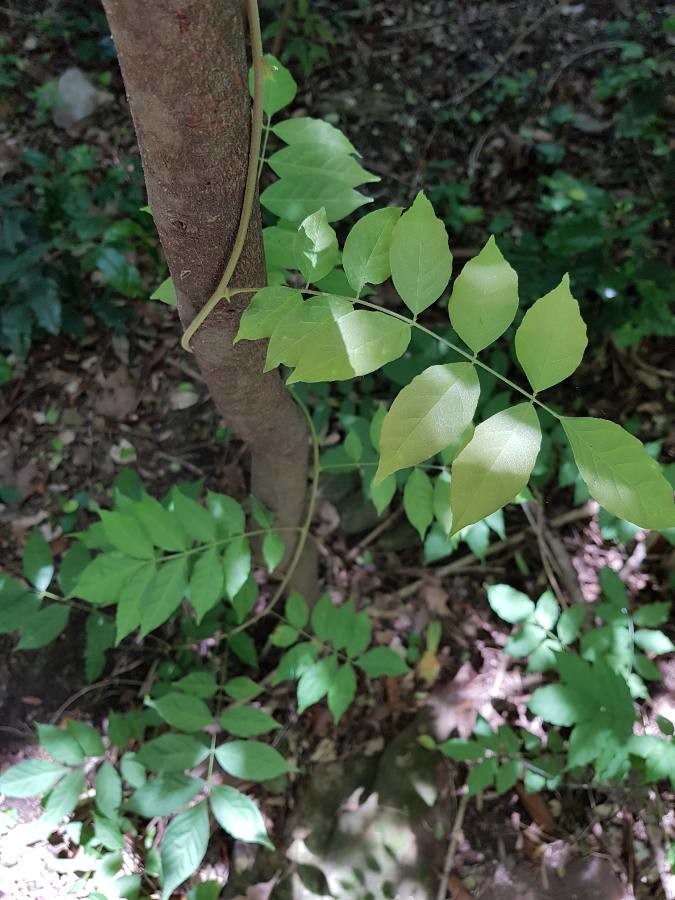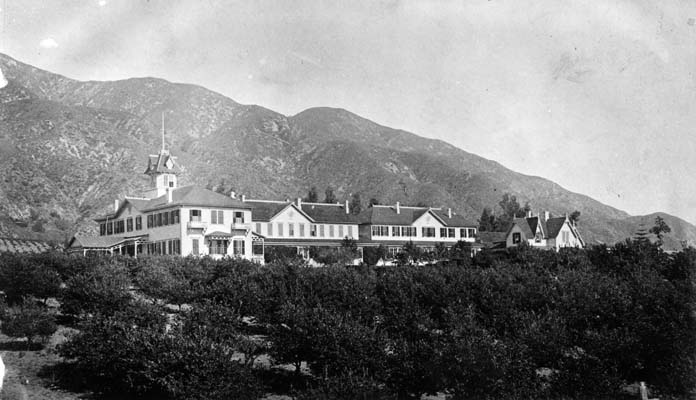|
Wisteria
''Wisteria'' is a genus of flowering plants in the legume family, Fabaceae (Leguminosae). The genus includes four species of woody twining vines that are native to China, Japan, Korea, Vietnam, southern Canada, the Eastern United States, and north of Iran. They were later introduced to France, Germany and various other countries in Europe. Some species are popular ornamental plants. The genus name is also used as the English name, and may then be spelt 'wistaria'. In some countries in Western and Central Europe, ''Wisteria'' is also known by a variant spelling of the genus in which species were formerly placed, ''Glycine (plant), Glycine''. Examples include the French ''glycines'', the German ''Glyzinie'', and the Polish ''glicynia''. The aquatic flowering plant commonly called wisteria or 'water wisteria' is ''Hygrophila difformis'', in the family Acanthaceae. Description Wisterias climb by twining their Plant stem, stems around any available support. ''Wisteria floribunda, W. ... [...More Info...] [...Related Items...] OR: [Wikipedia] [Google] [Baidu] |
Wisteria Frutescens
''Wisteria frutescens'', commonly known as American wisteria, is a woody, deciduous, perennial climbing vine, one of various wisterias of the family Fabaceae. It is native to the wet forests and stream banks of the southeastern United States, with a range stretching from the states of Virginia to Texas (Northeast Texas Piney Woods) and extending southeast through Florida, also north to Iowa, Michigan, and New York. Taxonomy Carl Linnaeus described ''Wisteria frutescens''. Kentucky wisteria, ''Wisteria frutescens'' var. ''macrostachya'' is a distinctive variety found in the southeastern United States, including its namesake state of Kentucky. It has been classified as a separate species, ''Wisteria macrostachya'' (Torr. & A. Gray) Nutt. ex B. L. Rob. & Fernald. Description American wisteria can grow up to 15 m long over many supports via powerful counterclockwise-twining stems. It produces dense clusters of blue-purple, two-lipped, flowers wide on racemes long in late sprin ... [...More Info...] [...Related Items...] OR: [Wikipedia] [Google] [Baidu] |
Wisteria Floribunda
''Wisteria floribunda'', common name , is a species of flowering plant in the family Fabaceae, native plant, native to Japan. (''Wisteriopsis japonica'', Synonym (taxonomy), synonym ''Wisteria japonica'', is a different species.) Growing to , ''Wisteria floribunda'' is a Woody plant, woody, deciduous twining vine, climber. It was first brought from Japan to the United States in the 1830s. It is a common subject for bonsai, along with ''Wisteria sinensis'' (Chinese wisteria). Japanese wisteria sports the longest flower racemes of any wisteria; Some of those cultivars can reach in length. These racemes burst into clustered white, pink, violet, or blue flowers in early- to mid-Spring (season), spring. The flowers carry a fragrance similar to that of grapes. The early flowering time of Japanese wisteria can cause problems in temperate climates, where early frosts can destroy the coming years' flowers. It will also flower only after passing from juvenile (organism), juvenile to adult ... [...More Info...] [...Related Items...] OR: [Wikipedia] [Google] [Baidu] |
Wisteria Sinensis
''Wisteria sinensis'', commonly known as the Chinese wisteria, is a species of flowering plant in the pea family (botany), family, native species, native to China, in the provinces of Guangxi, Guizhou, Hebei, Henan, Hubei, Shaanxi, and Yunnan. Growing tall, it is a deciduous vine. It is widely cultivated in temperate regions for its twisting stems and masses of scented flowers in hanging racemes, in spring. Description ''Wisteria sinensis'' clings to supporting plants or man-made structures by counterclockwise-twining stems. The leaf, leaves are shiny, green, pinnately compound, 10–30 cm in length, with 9-13 oblong leaflet (botany), leaflets that are each 2–6 cm long. The flowers are white, violet, or blue, produced on 15–20 cm racemes before the leaves emerge in spring. The flowers on each raceme open simultaneously before the foliage has expanded, and have a distinctive fragrance similar to that of grapes. Though it has shorter racemes than ''Wisteria flo ... [...More Info...] [...Related Items...] OR: [Wikipedia] [Google] [Baidu] |
Wisteria Brachybotrys
''Wisteria brachybotrys'', the silky wisteria, is a species of flowering plant in the pea family Fabaceae from Japan. Some older references believed it to be of garden origin. It is certainly very widely cultivated in its native Japan, with the white flowered cultivars more widely grown than the pale violet cultivars. It is in fact native to western parts of Honshu and throughout Shikoku and Kyushu, growing in mountain forests and woods from 100 to 900m. It is not at all clear why it is less popular in the west than in Japan. The Greek specific epithet ''brachybotrys'' means "short clusters". Growing to or more, it is a deciduous anticlockwise twining woody climber with hairy leaves to long, each leaf comprising up to 13 leaflets. The scented flowers, borne in late spring and early summer, are pale violet or white with a yellow blotch at the base. They hang in racemes up to long. They are followed by felted green seedpods containing pea-like seeds. These are reported to be to ... [...More Info...] [...Related Items...] OR: [Wikipedia] [Google] [Baidu] |
Sierra Madre, California
Sierra Madre (Spanish language, Spanish for "mother range") is a city in Los Angeles County, California, with a population of 11,268 at the time of the 2020 U.S. Census. The city is in the foothills of the San Gabriel Valley below the southern edge of the Angeles National Forest. Pasadena, California, Pasadena and Altadena, California, Altadena are to its west, with Arcadia, California, Arcadia to its south and east. Sierra Madre is known as "Wisteria City", and its city seal is decorated with a drawing of the now widely known vine. It is also called the "Village of the Foothills" and was an All-America City Award, All-America City in 2007. History Early history In approximately 500 Common Era, CE, Tongva people, Tongva Indians, the native people migrated from the Mojave, California, Mojave area to what would become Los Angeles County (including the San Gabriel Valley). Their name means "People of the Earth". Their primary language was Uto-Aztecan Shoshonean. In the 16th centu ... [...More Info...] [...Related Items...] OR: [Wikipedia] [Google] [Baidu] |
Sierra Madre Wisteria
Sierra Madre Wisteria or The Wistaria Vine is a flowering Wisteria vine shown at the annual Wistaria Festival in Sierra Madre, California. The Wistaria Vine in 1990 was declared by the ''Guinness Book of World Records'' to be the largest blossoming plant in the world. The Wistaria vine is named after physician Caspar Wistar (1761–1818) by botanist Thomas Nuttall (1786–1859). The general name for the plant is spelled Wisteria. This single wisteria vine covers over an acre. The Wistaria Vine has over 1.5 million blossoms and weighs over 250 tons. The plant is on private land and open to the public once a year during the Wistaria Festival."Wistaria Hysteria hits Sierra Madre Sunday" John Sollenberger, 3-22-07, ''Pasadena Weekly''. ... [...More Info...] [...Related Items...] OR: [Wikipedia] [Google] [Baidu] |
Caspar Wistar (physician)
Caspar Wistar (September 13, 1761January 22, 1818) was an Americans, American physician and Anatomy, anatomist. He is sometimes referred to as Caspar Wistar the Younger, to distinguish him from Caspar Wistar (glassmaker), his grandfather of the same name. The plant genus ''Wisteria'' is named for him. Biography He was born at Philadelphia, Pennsylvania, the son of Richard Wistar (1727–1781) and Sarah Wyatt (1733–1771). He was the grandson of Caspar Wistar (glassmaker), Caspar Wistar (1696–1752), a Germany, German immigrant, Religious Society of Friends, Quaker and glassmaker. Education He was educated at the Friends' school in his native city, where he received a thorough Classics, classical training. His interest in medicine began while he was aiding in the care of the wounded after the battle of Germantown, and he made his first studies under the direction of Dr. John Redman (physician), John Redman. He studied medicine, first at the University of Pennsylvania (receivin ... [...More Info...] [...Related Items...] OR: [Wikipedia] [Google] [Baidu] |
Fabaceae
Fabaceae () or Leguminosae,International Code of Nomenclature for algae, fungi, and plants. Article 18.5 states: "The following names, of long usage, are treated as validly published: ....Leguminosae (nom. alt.: Fabaceae; type: Faba Mill. Vicia L.; ... When the Papilionaceae are regarded as a family distinct from the remainder of the Leguminosae, the name Papilionaceae is conserved against Leguminosae." English pronunciations are as follows: , and . commonly known as the legume, pea, or bean family, is a large and agriculturally important family of |
Legume
Legumes are plants in the pea family Fabaceae (or Leguminosae), or the fruit or seeds of such plants. When used as a dry grain for human consumption, the seeds are also called pulses. Legumes are grown agriculturally, primarily for human consumption, but also as livestock forage and silage, and as soil-enhancing green manure. Legumes produce a botanically unique type of fruit – a simple fruit, simple Dry fruits, dry fruit that develops from a simple carpel and usually Dehiscence (botany) , dehisces (opens along a seam) on two sides. Most legumes have Symbiosis , symbiotic nitrogen fixation , nitrogen-fixing bacteria, Rhizobia, in structures called root nodules. Some of the fixed nitrogen becomes available to later crops, so legumes play a key role in crop rotation. Terminology The term ''pulse'', as used by the United Nations' Food and Agriculture Organization (FAO), is reserved for legume crops harvested solely for the dry seed. This excludes green beans and Pea , green ... [...More Info...] [...Related Items...] OR: [Wikipedia] [Google] [Baidu] |
Thomas Nuttall
Thomas Nuttall (5 January 1786 – 10 September 1859) was an English botanist and zoologist who lived and worked in America from 1808 until 1841. Nuttall was born in the village of Long Preston, near Settle in the West Riding of Yorkshire and spent some years as an apprentice printer in England. Soon after going to the United States he met professor Benjamin Smith Barton in Philadelphia. Barton encouraged his strong interest in natural history. Early explorations in the United States In 1810 he travelled to the Great Lakes and in 1811 travelled on the Astor Expedition led by William Price Hunt on behalf of John Jacob Astor up the Missouri River. Nuttall was accompanied by the English botanist John Bradbury, who was collecting plants on behalf of Liverpool botanical gardens. Nuttall and Bradbury left the party at the trading post with the Arikara Indians in South Dakota, and continued farther upriver with Ramsay Crooks. In August they returned to the Arikara post and jo ... [...More Info...] [...Related Items...] OR: [Wikipedia] [Google] [Baidu] |
Perelman School Of Medicine At The University Of Pennsylvania
The Perelman School of Medicine (commonly known as Penn Med) is the medical school of the University of Pennsylvania, a Private university, private, Ivy League research university located in Philadelphia. Founded in 1765, the Perelman School of Medicine is the List of medical schools in the United States, oldest medical school in the United States. Today, the Perelman School of Medicine is a major center of biomedical research and education with over 2,900 faculty members and nearly $1 billion in annual sponsored program awards. History 18th century The founding of a school of medicine was proposed by John Morgan (physician), John Morgan, a graduate of the Academy and College of Philadelphia, College of Philadelphia and the University of Edinburgh Medical School. After training in Edinburgh and other European cities, Morgan returned to Philadelphia in 1765. With fellow University of Edinburgh Medical School graduate William Shippen Jr., Morgan persuaded the college's trustees ... [...More Info...] [...Related Items...] OR: [Wikipedia] [Google] [Baidu] |








